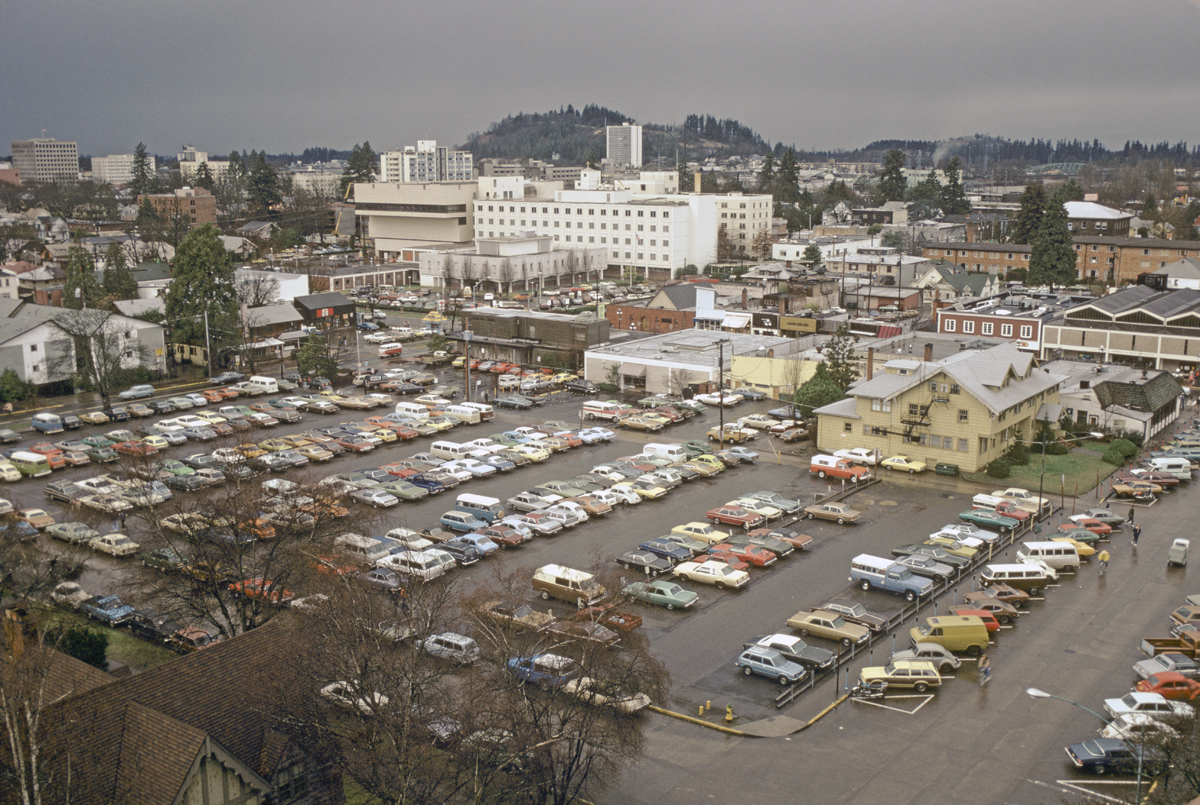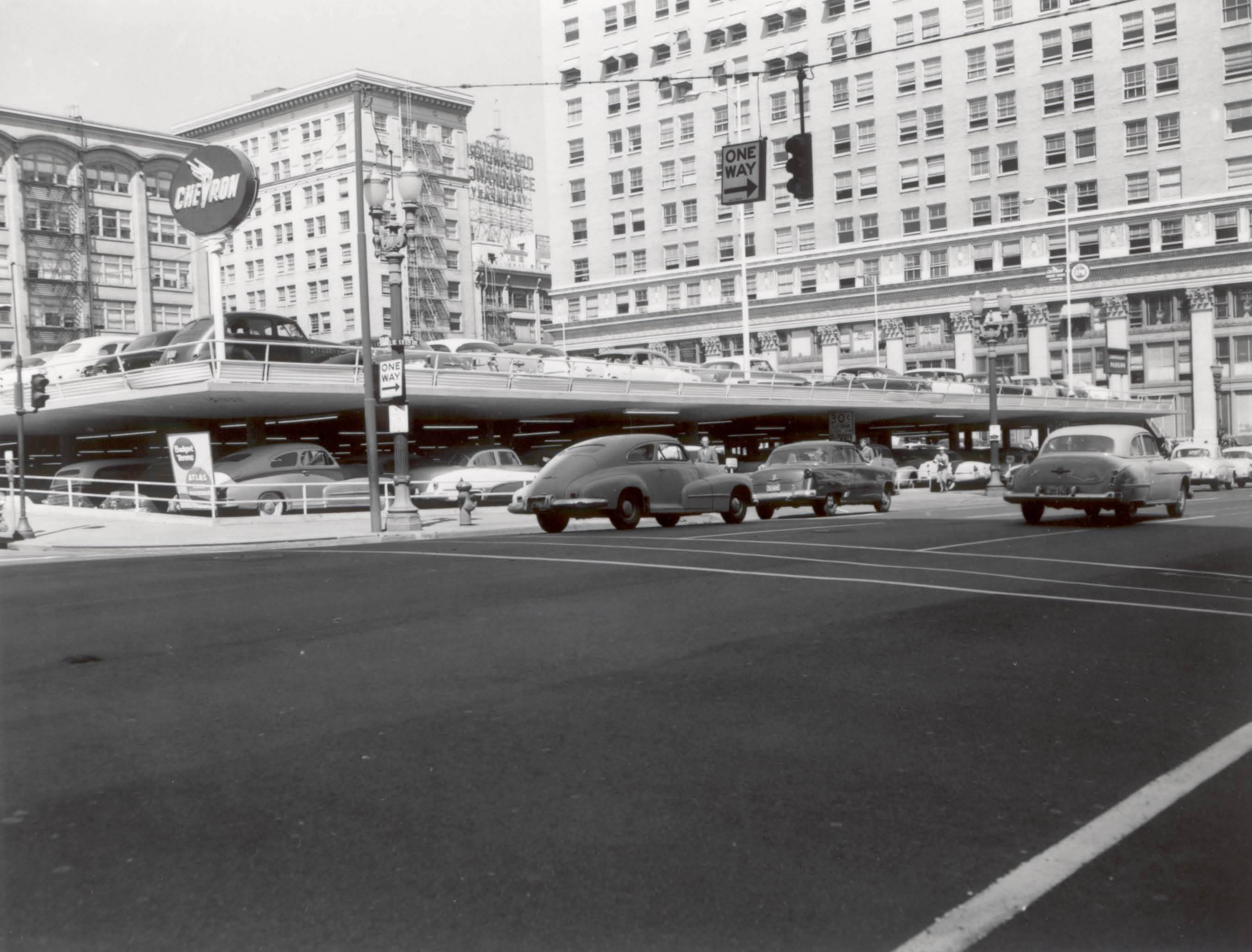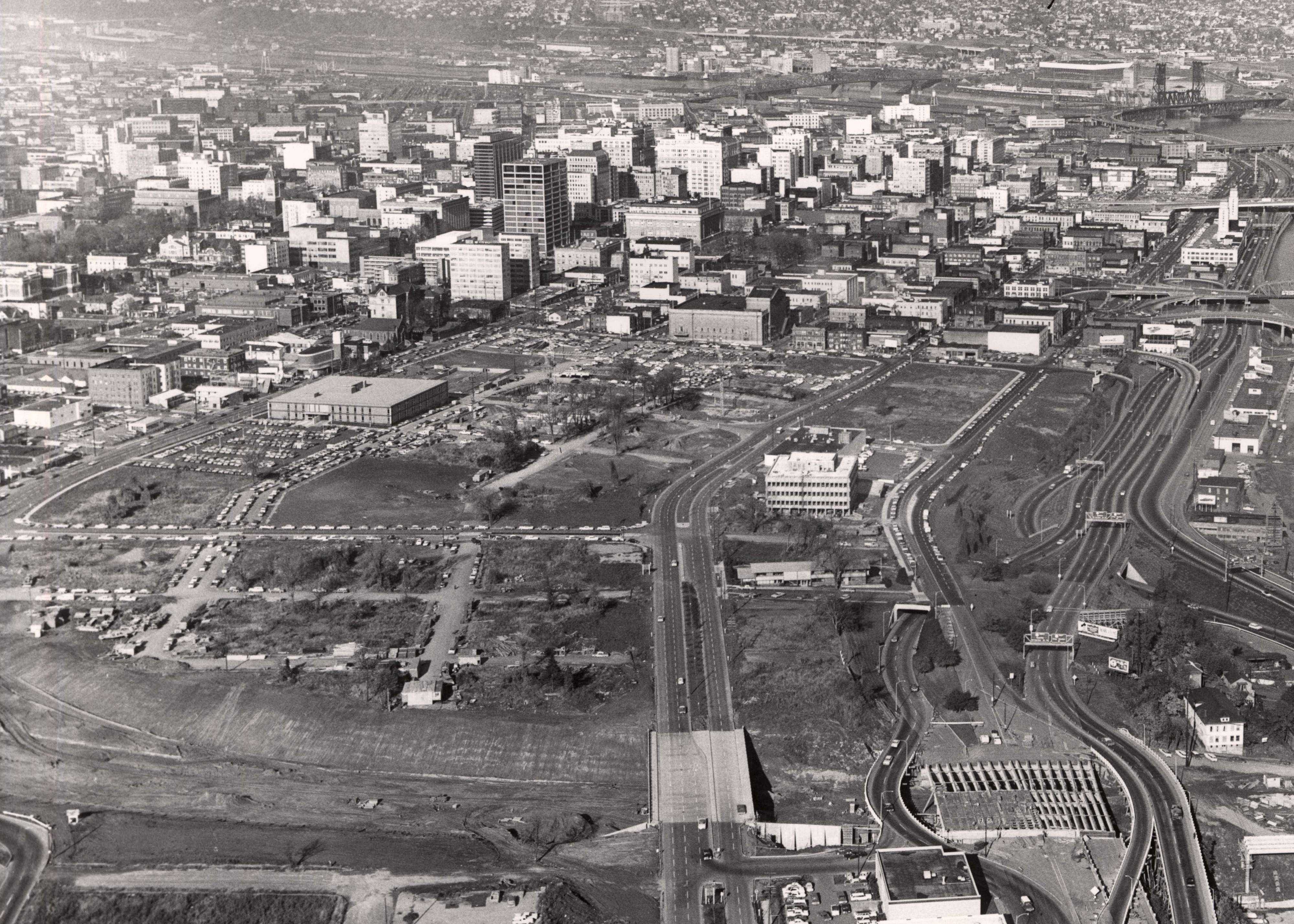
April 1, 2014. Preservationists are mounting a campaign to save Oregon’s rapidly disappearing stock of vacant lots, most of which were created between 1940 and 1970.
“Oregonians wouldn’t recognize our state’s historic main streets if the empty lots were infilled with new buildings,” says Restore Oregon executive director Peggy Moretti. “For too long we have considered these vacant lots ‘interlopers’ or ‘missing teeth’ in our historic downtowns but it is time for their historic significance and aesthetic merits to be recognized and celebrated.”
While vacant lots existed in downtowns before the 1940s, it is those properties that were cleared for urban renewal and automobile parking that are of the most importance to today’s preservationists. According to the nonprofit Asphalt Pavement Association, “Asphalt pavements have played an important role in changing the landscape and the history of the U.S. since the late 19th century.”

lot was unceremoniously razed in the 1980s to
make way for Pioneer Courthouse Square.
Today’s preservationists want the lot back
(Image courtesy City of Portland Archives).
“I am currently preparing three National Register of Historic Places nominations for asphalt parking lots,” says Tim Askin, a historic preservation consultant based in Portland. “What makes these parking lots truly extraordinary is their high-degree of physical integrity, ranging from the height of bollards to overall proportion of the parking stalls.” Despite the historic significance of vacant lots, Askin notes that the recent installation of bike racks has altered the overall look and feel of many downtown parking lots, making them ineligible for historic designation.
The trend to preserve surface lots is part of a growing recognition that modern is historic. In Oregon, sixty-five garages are currently listed in the National Register, but only one lot (a 1938 parking area at Crater Lake) has been designated. Consultants like Askin hope to see more designations by year’s end, including a proposed Parking Lot Historic District stretching the length of Portland’s 82nd Avenue.
While Oregon’s parking lot ethic may not be as strong as in some other states, the preservation movement here is galvanizing younger preservationists in a way not seen since the 1970s. Compatible infill, tree planting, alternative transportation, and public opinion against surface lots are fueling the critical need to document and preserve surface lots, especially in Portland’s close-in neighborhoods.

If preservation efforts are not taken soon, the important
history of the vacant lot era will be lost forever
(Image courtesy City of Portland Archives).
Portland’s downtown square provides a case study in the evolution of preservation attitudes in Oregon. A half-century ago, Portland’s first preservationists lamented the loss of the Portland Hotel, a full-block building replaced by a parking lot. Pioneer Courthouse Square replaced that parking lot in 1984. While many locals are today celebrating the 30th anniversary of the park, younger preservationists argue that the parking lot never should have been removed. A new nonprofit, Preserve Paved Paradise (sarcastically named after a 1970 Joni Mitchell song), is advocating the square be demolished and the lot rebuilt in accordance with the Secretary of the Interior Standards for Reconstruction.
While efforts to preserve vacant lots may seem fringe to non-preservationists, Restore Oregon’s Moretti reminds us, “Americans used to tear down grand houses and downtown buildings willy-nilly in the name of progress. The clearance legacy is today endangered and it’s up to preservationists to save the beautiful history of vacant lots.”
…April Fools!


One Reply to “Oregon Preservationists Vow to Save Endangered Parking Lots”
Comments are closed.